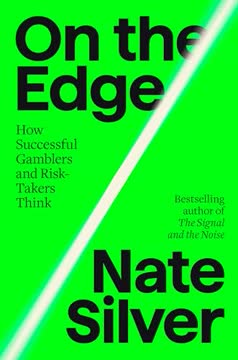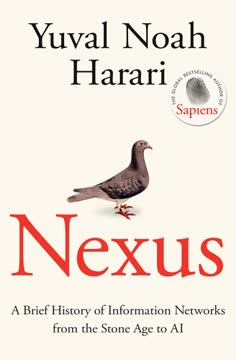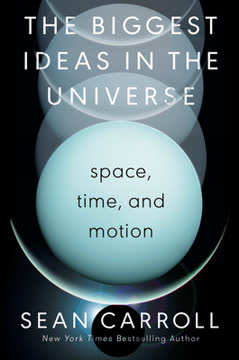نکات کلیدی
1. گذرگاه میانسالی: سفری تحولآفرین در میانسالی
"گذرگاه میانسالی زمانی آغاز میشود که فرد ناچار است با مسائلی روبهرو شود که پیش از این بهطور سطحی برطرف شده بودند."
بحران بهعنوان فرصت. گذرگاه میانسالی، که معمولاً در میانسالی رخ میدهد، یک انتقال روانشناختی عمیق است. این دوره با احساس بیهدفی، فقدان معنا و پرسش از هویت و انتخابهای زندگی همراه است. این دوره معمولاً با تغییرات خارجی در زندگی مانند تغییر شغل، بحرانهای روابط یا نگرانیهای سلامتی همزمان میشود.
علائم و محرکها. نشانههای رایج ورود به گذرگاه میانسالی شامل:
- احساس افسردگی، اضطراب یا پوچی
- از دست دادن اشتیاق برای فعالیتهای قبلاً لذتبخش
- پرسش از باورها و ارزشهای دیرینه
- تمایل به تغییرات اساسی در زندگی
شروع این دوره میتواند بهوسیله عوامل مختلفی تحریک شود:
- درک مرگ و زمان محدود
- رویاها و انتظارات برآوردهنشده
- از بین رفتن توهمات جوانی
- شناسایی محدودیتهای نقشهای اجتماعی
2. شخصیت موقتی: کشف خود کاذب
"شخصیت موقتی مجموعهای از استراتژیهاست که کودک آسیبپذیر برای مدیریت اضطراب وجودی انتخاب میکند."
تطبیقهای دوران کودکی. شخصیت موقتی در دوران کودکی بهعنوان پاسخی به محیط و تجربیات ما شکل میگیرد. این مجموعهای از مکانیزمهای مقابلهای و رفتارهاست که برای جلب تأیید، اجتناب از درد و پیمایش در جهان طراحی شده است. در حالی که این شخصیت برای بقا ضروری است، اما در بزرگسالی معمولاً محدودکننده میشود.
شناسایی ماسک. نشانههای زندگی از طریق شخصیت موقتی شامل:
- احساس غیرواقعی یا "غیر از خود بودن"
- دشواری در ابراز احساسات یا خواستههای واقعی
- اولویت دادن به نیازهای دیگران بر نیازهای خود
- ترس از طرد یا abandono
گذرگاه میانسالی ما را به چالش میکشد تا این خود کاذب را شناسایی و از بین ببریم و اجازه دهیم ذات واقعیمان نمایان شود. این فرآیند شامل:
- شناسایی زخمهای دوران کودکی و تأثیر آنها بر رفتار کنونی
- به چالش کشیدن باورهای ریشهدار و واکنشهای خودکار
- توسعه خودآگاهی و هوش هیجانی
- پرورش شجاعت برای زندگی بهطور واقعی، حتی اگر به معنای ناامید کردن دیگران باشد
3. دینامیکهای روابط: ازProjection به رشد شخصی
"حقیقت درباره روابط صمیمی این است که آنها هرگز نمیتوانند بهتر از رابطه ما با خودمان باشند."
پروژکشن و ناامیدی. در روابط، ما اغلب نیازها، ترسها و ایدهآلهای برآوردهنشده خود را بر روی شریکمان پروژکت میکنیم. این منجر به انتظارات غیرواقعی و ناامیدی اجتنابناپذیر میشود. گذرگاه میانسالی معمولاً این پروژکشنها را بهوضوح نشان میدهد، زیرا ما متوجه میشویم که شرکایمان نمیتوانند تمام نیازهای عاطفی ما را برآورده کنند یا ما را کامل کنند.
از ادغام به فردیت. روابط سالم در میانسالی و بعد از آن نیازمند:
- برداشت پروژکشنها و دیدن شرکا بهعنوان افراد جداگانه
- پذیرش مسئولیت برای سلامت عاطفی خود
- پرورش خودمحوری و کمال درونی
- حمایت از رشد و فردیت یکدیگر
این تغییر میتواند چالشبرانگیز باشد و ممکن است منجر به:
- درگیریها یا پایان روابط
- کاوش در مدلهای جدید روابط
- ارتباطات عمیقتر و واقعیتر بر اساس احترام متقابل و رشد فردی
4. فردیت: مسیر یونگ به کمال
"فردیت ضرورت توسعهای هر یک از ماست تا بهطور کامل به خود تبدیل شویم، در محدودههایی که سرنوشت بر ما تحمیل کرده است."
سفر خودتحققیابی. فردیت فرآیند ادغام جنبههای آگاه و ناآگاه روان ماست تا به فردی کاملتر و واقعیتر تبدیل شویم. این یک سفر مادامالعمر است که در طول گذرگاه میانسالی شدت میگیرد.
جنبههای کلیدی فردیت:
- مواجهه و ادغام سایه (جنبههای سرکوبشده خود)
- توسعه رابطه با آنیما/آنیماس (جنبههای متضاد جنسی)
- شناسایی و پاسخ به تأثیرات آرchetypal
- پرورش ارتباط با خود (مرکز سازماندهنده روان)
گامهای عملی برای حمایت از فردیت:
- درگیر شدن در خوداندیشی از طریق نوشتن، مدیتیشن یا درمان
- توجه به رویاها و کاوش در نمادگرایی آنها
- پیگیری ابراز خلاقانه و کار معنادار
- پرورش روابطی که از ابراز واقعی خود حمایت میکند
5. سایه: پذیرش خود نادیدهگرفتهشده
"سایه نباید با شر معادلسازی شود، بلکه تنها با زندگی که سرکوب شده است."
پتانسیل پنهان. سایه شامل تمام جنبههای خودمان است که سرکوب یا انکار کردهایم، اغلب بهدلیل انتظارات اجتماعی یا خانوادگی. در حالی که میتواند شامل ویژگیهای منفی باشد، اما همچنین خلاقیت، خودانگیختگی و زندگیپذیری نادیدهگرفتهشده را در خود دارد.
ادغام سایه. شناسایی و ادغام سایه برای رشد شخصی و اصالت بسیار مهم است. مزایای آن شامل:
- افزایش خودآگاهی و پذیرش
- همدلی و درک بیشتر از دیگران
- دسترسی به انرژی و خلاقیت نادیدهگرفتهشده
- کاهش پروژکشن ویژگیهای منفی بر دیگران
تکنیکهای کار با سایه:
- شناسایی واکنشهای عاطفی تحریکشده در زندگی روزمره
- کاوش در تمهای تکراری در رویاها
- تمرین تخیل فعال یا ابراز هنری
- جستجوی درمان یا پیوستن به گروههای حمایتی برای کاوش هدایتشده
6. از تنهایی به تنهایی: پرورش قدرت درونی
"بهترین درمان برای تنهایی، تنهایی است."
تنهایی تحولآفرین. تنهایی یک حالت دردناک از احساس عدم ارتباط و عدم حمایت است. در مقابل، تنهایی یک تجربه غنی و پرورشدهنده از بودن در کنار خود است. گذرگاه میانسالی اغلب شامل تغییر از ترس از تنهایی به پذیرش آن بهعنوان منبعی برای تجدید و خودشناسی است.
پرورش تنهایی. تمرینهایی برای توسعه رابطه مثبت با تنهایی:
- ایجاد آیینهای روزانه برای تأمل آرام یا مدیتیشن
- درگیر شدن در فعالیتهای انفرادی که شادی و رضایت به ارمغان میآورد
- تمرین ذهنآگاهی برای افزایش آگاهی از لحظه حال
- کاوش در فعالیتهای خلاقانه بدون قضاوت
مزایای پذیرش تنهایی:
- افزایش خوداتکایی و ثبات عاطفی
- افزایش خلاقیت و توانایی حل مسئله
- درک عمیقتر از خود و اصالت
- بهبود کیفیت روابط بهدلیل کاهش وابستگی
7. اشتیاق و هدف: کشف دوباره معنای زندگی
"به دنبال شادی خود بروید."
دوباره ارتباط برقرار کردن با زندگی. گذرگاه میانسالی اغلب شامل از دست دادن اشتیاق و معناست، زیرا اهداف و نقشهایی که قبلاً ما را تعریف میکردند، درخشش خود را از دست میدهند. این بحران فرصتی برای کشف دوباره آنچه واقعاً روح ما را شعلهور میکند و به زندگیمان هدف میدهد، فراهم میکند.
کشف خواستههای واقعی. استراتژیهایی برای دوباره ارتباط برقرار کردن با اشتیاق:
- تأمل در علایق و رویاهای دوران کودکی
- کاوش در فعالیتها و فرصتهای یادگیری جدید
- توجه به آنچه شما را انرژی میدهد و هیجانزده میکند
- در نظر گرفتن اینکه چگونه میتوانید به چیزی بزرگتر از خود کمک کنید
چالشها در پیگیری اشتیاق:
- غلبه بر ترس از تغییر یا شکست
- تعادل بین مسئولیتها و خواستههای شخصی
- مواجهه با انتظارات یا قضاوتهای دیگران
- توسعه صبر و پایداری در برابر موانع
8. مواجهه با مرگ: پذیرش طبیعت محدود زندگی
"نیرویی که از طریق جوانه سبز گل را به حرکت درمیآورد، ویرانگر من است."
مرگ بهعنوان معلم. پذیرش مرگ و میر ما یک وظیفه مرکزی در گذرگاه میانسالی است. در حالی که در ابتدا ترسناک است، مواجهه با طبیعت محدود ما میتواند به زندگیای واقعیتر و هدفمندتر منجر شود.
آگاهی تحولآفرین. مزایای مواجهه با مرگ:
- افزایش قدردانی از لحظه حال
- شفافسازی اولویتها و ارزشها
- انگیزه برای پیگیری اهداف معنادار
- ارتباطات عمیقتر با عزیزان
تمرینهایی برای درگیر شدن با مرگ:
- تأمل در میراث و تأثیر زندگیتان
- درگیر شدن در بحثهای برنامهریزی برای پایان زندگی
- تمرین قدردانی برای هر روز
- کاوش در دیدگاههای فلسفی یا معنوی درباره مرگ
با مواجهه با مرگ، بهطور پارادوکسیکال، ما بهطور کاملتری زنده میشویم و هر لحظه را با آگاهی و نیت بیشتری در آغوش میکشیم.
آخرین بهروزرسانی::
FAQ
What's "The Middle Passage: From Misery to Meaning in Midlife" about?
- Exploration of Midlife Crisis: The book delves into the concept of the midlife crisis, which the author, James Hollis, prefers to call the "Middle Passage." It examines the psychological turmoil and opportunities for growth that occur during this period.
- Jungian Psychology: It uses Jungian psychology to explore the psychological aspects of middle age, focusing on the transition from a provisional life to a more authentic self.
- Personal Growth and Transformation: The book emphasizes the potential for personal growth and transformation during midlife, encouraging readers to redefine their sense of self and find deeper meaning in their lives.
Why should I read "The Middle Passage: From Misery to Meaning in Midlife"?
- Insight into Midlife Challenges: The book provides valuable insights into the challenges and opportunities that arise during midlife, helping readers understand and navigate this complex period.
- Jungian Perspective: It offers a unique perspective based on Jungian psychology, which can be particularly enlightening for those interested in depth psychology and personal development.
- Practical Guidance: The book provides practical guidance for individuals seeking to transform their lives and find meaning during the middle years, making it a useful resource for personal growth.
What are the key takeaways of "The Middle Passage: From Misery to Meaning in Midlife"?
- Redefining Identity: Midlife is an opportunity to redefine one's identity, moving from a provisional self to a more authentic and meaningful existence.
- Embracing Change: The book encourages embracing the changes and challenges of midlife as opportunities for growth and transformation.
- Inner Dialogue: It emphasizes the importance of engaging in an inner dialogue with oneself to uncover hidden aspects of the psyche and achieve individuation.
What is the "Middle Passage" according to James Hollis?
- Transition Period: The "Middle Passage" is a term used by Hollis to describe the transition period in midlife when individuals reassess their lives and seek deeper meaning.
- Opportunity for Growth: It is seen as an opportunity for personal growth and transformation, allowing individuals to move from a false self to a more authentic self.
- Psychological Journey: The Middle Passage involves a psychological journey that requires individuals to confront their fears, dependencies, and unresolved issues from the past.
How does Jungian psychology influence "The Middle Passage"?
- Focus on Individuation: Jungian psychology emphasizes the process of individuation, which is central to the book's exploration of midlife transformation.
- Archetypes and Complexes: The book discusses the role of archetypes and complexes in shaping one's identity and how they can be addressed during the Middle Passage.
- Inner Dialogue: Jungian concepts of the ego, Self, and shadow are used to encourage readers to engage in an inner dialogue and achieve greater self-awareness.
What are the symptoms of a midlife crisis according to "The Middle Passage"?
- Emotional Turmoil: Symptoms include depression, anxiety, and a sense of loss or confusion about one's identity and purpose.
- Behavioral Changes: Individuals may experience changes in behavior, such as infidelity, substance abuse, or compulsive actions.
- Existential Questions: The crisis often involves existential questions about the meaning of life and one's place in the world.
How does "The Middle Passage" suggest dealing with midlife challenges?
- Embrace Change: The book encourages embracing change and viewing midlife challenges as opportunities for growth and transformation.
- Inner Work: It emphasizes the importance of inner work, such as engaging in an inner dialogue and exploring one's dreams and unconscious mind.
- Seek Meaning: Readers are encouraged to seek deeper meaning in their lives and redefine their sense of self beyond societal roles and expectations.
What role do projections play in "The Middle Passage"?
- Unconscious Projections: Projections are unconscious aspects of oneself that are projected onto others, often leading to unrealistic expectations in relationships.
- Withdrawal of Projections: The book discusses the importance of withdrawing projections to achieve greater self-awareness and improve relationships.
- Self-Responsibility: By recognizing and withdrawing projections, individuals can take greater responsibility for their own happiness and fulfillment.
What is individuation in the context of "The Middle Passage"?
- Process of Becoming: Individuation is the process of becoming one's true self, moving beyond societal roles and expectations to achieve personal authenticity.
- Integration of Opposites: It involves integrating different aspects of the psyche, such as the ego, shadow, anima, and animus, to achieve wholeness.
- Central Theme: Individuation is a central theme in the book, guiding readers through the challenges and opportunities of the Middle Passage.
What are the best quotes from "The Middle Passage" and what do they mean?
- "Life must be remembered backward, but lived forward." This quote emphasizes the importance of reflecting on the past to understand and navigate the future.
- "If you bring forth what is within you, what you bring forth will save you." This highlights the idea that personal growth and transformation come from within, and embracing one's true self is key to finding meaning.
- "The Middle Passage is an occasion for redefining and reorienting the personality." This underscores the book's central theme of using midlife as an opportunity for personal growth and self-discovery.
How does "The Middle Passage" address the concept of the shadow?
- Repressed Aspects: The shadow represents repressed aspects of the personality that are often projected onto others.
- Integration for Growth: The book emphasizes the importance of integrating the shadow to achieve personal growth and wholeness.
- Source of Energy: By acknowledging and integrating the shadow, individuals can access untapped energy and creativity.
What practical advice does "The Middle Passage" offer for navigating midlife?
- Engage in Inner Work: The book advises engaging in inner work, such as exploring dreams and practicing active imagination, to gain self-awareness.
- Embrace Solitude: It encourages embracing solitude to connect with one's inner self and move from loneliness to a sense of wholeness.
- Follow Your Passion: Readers are encouraged to follow their passion and seek activities that bring joy and fulfillment, contributing to a meaningful life.
نقد و بررسی
کتاب عبور از میانسالی به خاطر بررسی عمیق خود از تغییرات میانسالی مورد تحسین قرار گرفته است. خوانندگان از دیدگاه یونگی هالیس در زمینهی رشد شخصی، خودشناسی و غلبه بر چالشهای زندگی قدردانی میکنند. بسیاری این کتاب را تحولآفرین میدانند و راهنماییهای ارزشمندی برای مدیریت بحرانهای هویتی و روابط ارائه میدهد. در حالی که برخی منتقدان به سبک انتزاعی آن و گاهی کمبود مثالهای عینی اشاره میکنند، بیشتر بررسیکنندگان آن را کتابی عمیق و اندیشهبرانگیز میدانند که به خوداندیشی و زندگی اصیل تشویق میکند. مضامین این کتاب با خوانندگانی که به دنبال معنا و توسعه شخصی در نیمهی دوم زندگی هستند، همخوانی دارد.
Studies in Jungian Psychology Series
Similar Books
















